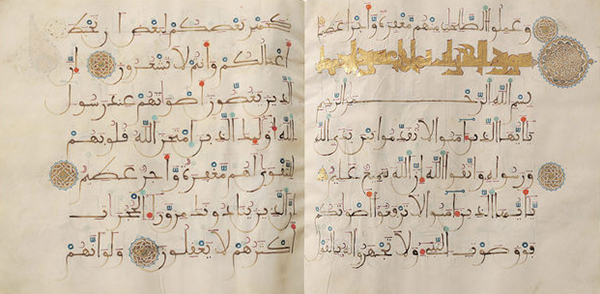Unique Andalusian calligraphy at Istanbul's Kufi exhibition
Andalusia has long enchanted humanity with astonishing architecture, rich history and the intellectual and scientific heritage left for humanity to admire. Having paved the way for the Renaissance, which flourished across Europe, Andalusia was affected by Islamic civilization's interest in book writing. Andalusian Islam, which brought forth a mystic scholar like Ibn Arabi; scientific works from astronomy to medicine, geography and mathematics; and exotic buildings such as the Alhambra, the Cordoba Mosque and the Giralda; and left sublime artworks throughout Europe.
The exhibition "Calligraphy of the Miracle Book: Kufic," exhibits copies of the Quran written in Kufic, and explores Andalusia's effect and contribution on Islamic book art through works created during Islam's heyday in Europe. Quran manuscripts, written on square shape parchments with sepia ink in Maghrebi script, and ornamented with illustrations, will be on display until May 10 at the Turkish and Islamic Arts Museum.
The Quran manuscripts displayed at "Calligraphy of The Miracle Book: Kufic," produced during the period of the Almohad Caliphate (1157-1232), were written by the prominent calligraphers of the time and ornamented by the most gifted illuminators. The Andalusian calligraphers used Maghrebi script, which is a kind of Kufic style that is considered the calligraphy style of the very first Quran manuscripts.
"Calligraphy of The Miracle Book: Kufic" offers art lovers a chance to trace the art of book writing in Andalusian Islamic civilization. The exhibition is organized by the Islamic Culture and Art Platform, under the auspices of Presidency of the Republic of Turkey with support of Turkish Airlines.
 Unique Andalusian calligraphy at Istanbul's Kufi exhibition
Unique Andalusian calligraphy at Istanbul's Kufi exhibitionSource: www.dailysabah.com
Calligraphy is a remedy and mental gymnastics.



